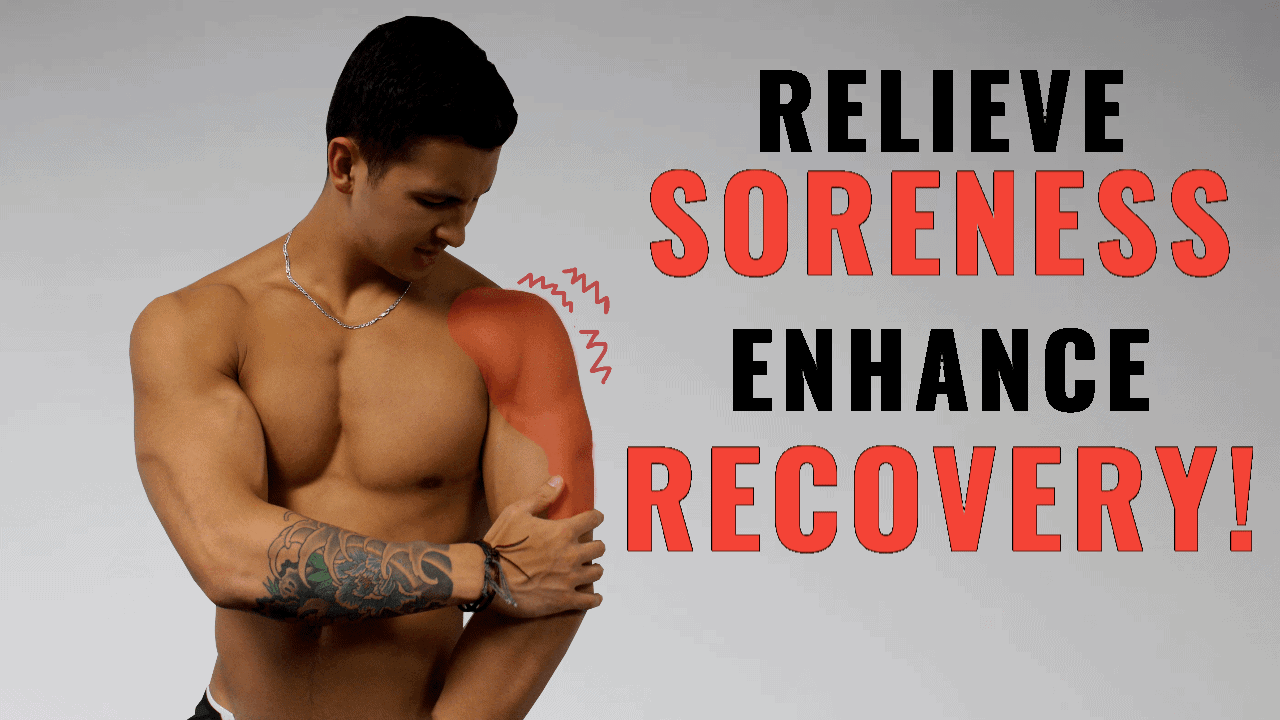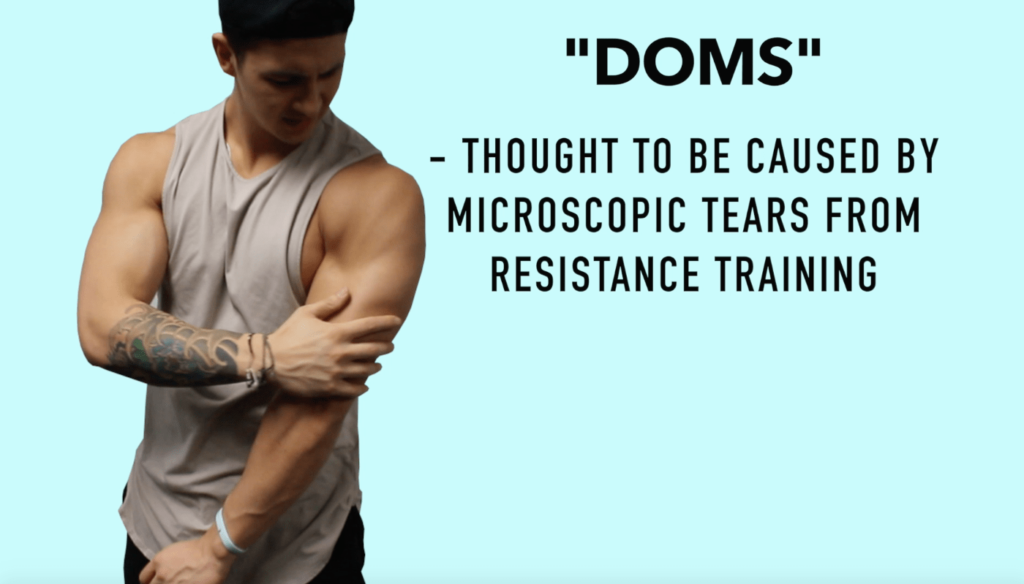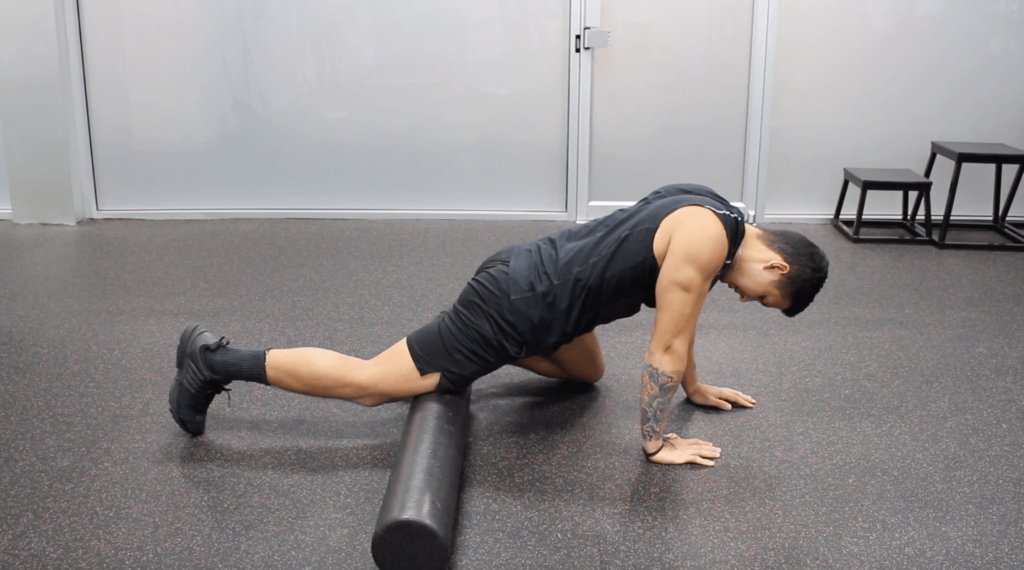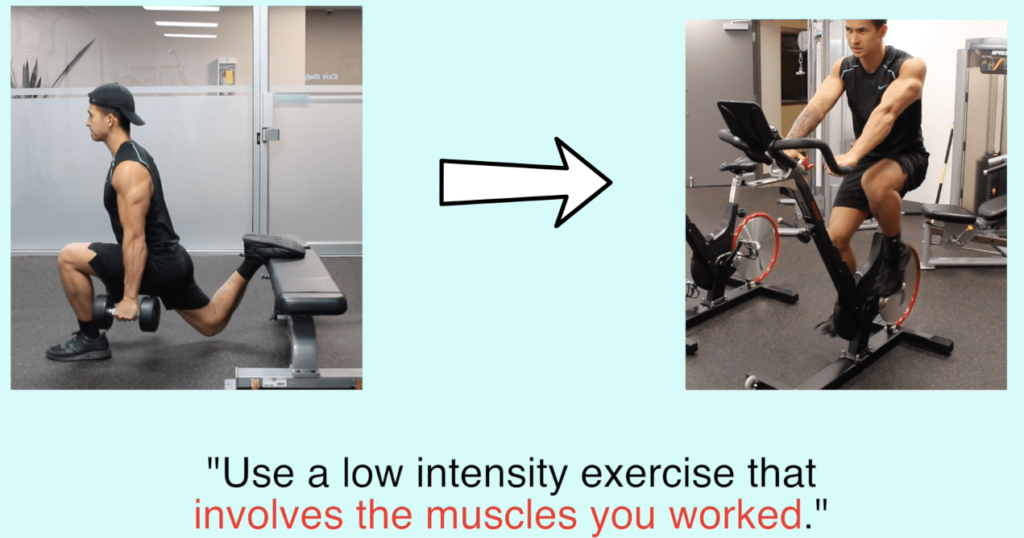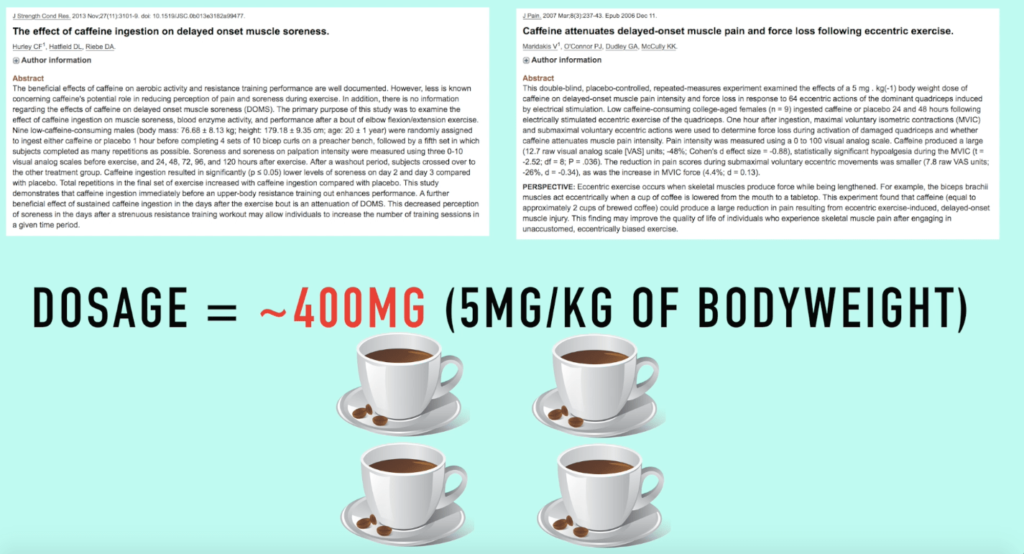4 Science-Backed Tips to Reduce Muscle Soreness and Enhance Muscle Recovery
In this article you'll learn why too much muscle soreness can be a bad thing and how to relieve it with evidence-backed methods.
The soreness you feel after a workout is something you’re all probably familiar with (especially after a hard leg day).
This feeling, known as delayed onset muscle soreness, or “DOMS” is thought to be caused by microscopic tears in your muscle fibers. These tears can occur from resistance training or just a novel stimulus in general.
Aside from just being generally uncomfortable, particularly with legs soreness, too much soreness can also negatively impact your training. This is especially true if it carries over into your next workouts. Studies show that training a muscle while it’s still sore can reduce the activation of the desired muscle, reduce the force capacity of the muscle by up to 50%, and negatively interfere with the recovery process.
Therefore, it’s vital that you take the necessary steps in order to minimize post workout soreness and speed up the muscle recovery process. This is especially true since we already know that muscle soreness isn't an indicator of muscle growth.
Before that: if you're looking for a training program that'll always help you train in the most optimal approach for muscle growth, I've got just the thing for you. Every BWS program is designed to be an all-in-one, science-based process that’ll get you to your dream physique FAST. And best of all? It's all rooted in science. For more information:
Click the button below to take my analysis quiz to discover the best program for you:
↓
Ice Baths and Stretch?
Although two common suggestions are to take ice baths or stretch after your workout, this isn’t the best advice to take. Although ice baths may slightly help with muscle soreness, they’ve also been shown to hinder muscle growth and strength by interfering with the muscle recovery process.
And as for static stretching after a workout, multiple studies from the Journal of Sports medicine have indicated that it actually doesn’t help with muscle soreness. In fact, it may even interfere with the recovery process as well!
Therefore, both of these wouldn’t be an ideal solution for those with the goal of strength and muscle growth.
So what can you do?
Well aside from the general recommendations of getting enough sleep and adequate protein, there’s a few extra steps you can take which is exactly what I’ll cover in this video.
Tip #1: Self Myofascial Release (Foam Rolling)
Self myofascial release, most commonly done in the form of foam rolling, has become increasingly popular in recent years. Aside from its positive effect on improving mobility, it seems to also be an effective way of reducing muscle soreness.
Although research is still lacking, of the 4 available studies (Howe 2013, MacDonald 2014, Jay 2014, Pearcey 2015) that have directly analyzed the effect of foam rolling on muscle soreness, 3 of them showed a positive effect on reducing muscle soreness and enhancing muscle recovery.
This reduction in muscle soreness seemed to enhance the workout performance of the subjects in their next workouts.
So how exactly can you apply this?
Well I’d suggest foam rolling after your workout for around 10 minutes or so. Stick to the muscles you worked that day, especially the ones that tend to experience the most soreness.
You can also do the foam rolling a few hours after your workout instead if that’s more convenient for you.
As for how to properly foam roll, I’ll save that topic for another video. For now, just focus on not going over a muscle too quickly. For really tight areas, keep the pressure on them until you feel them release.
And if you’re looking to purchase a foam roller, here's the one often shown on my YouTube channel and here's a slightly higher quality one I personally use as well.
Tip #2: Active Recovery
Another thing you can do to reduce muscle soreness is incorporate active recovery. This includes cool-downs, low intensity exercise, and so on. Again, not many studies have looked into this but the few studies that have (Sayers et al. (2000), Donnelly et al. (1992), Weber et al. (1994)), found that active recovery performed either immediately after a workout or within the days following the workout reduced muscle soreness more than when no active recovery was used.
Thus, it seems to be a viable solution and is something I can anecdotally say helps with muscle soreness.
But it's important that you implement it correctly for the best results.
I’d suggest performing 5-10 minutes of active recovery or cool-down after your workout, especially for leg workouts. This can be done after your foam rolling if you’re going to do that after your workout as well.
However, the most important part when it comes to active recovery is to use a low intensity exercise that involves the muscles you worked.
For example, low intensity cycling would be ideal after a leg workout whereas something like rowing or swimming would be ideal after an upper body or arm day.
Really enjoy digging into the research of what works for recovery - and what doesn't? Then you'll absolutely love working with my team of highly-qualified trainers and nutritionists (plus myself!); in the process of guiding you through the process of achieving your dream physique in the time-efficient way possible, we'll also make sure you understand the science behind it all. Find out more here:
Click the button below to find out more about the 3-on-1 coaching program:
↓
Tip #3: Supplements
Although there’s several supplements out there that claim to enhance muscle recovery and reduce muscle soreness, the truth is research is relatively inconclusive when it comes to this.
However, the research behind omega-3’s is promising. First off, omega-3’s have been recently shown to improve anabolic signalling which likely improves muscle repair and growth. In addition, multiple other studies have shown that supplementation of around 1-3g of omega-3’s significantly reduces muscle soreness following resistance training exercise by reducing inflammation.
So taking a few high quality omega-3 fish oil pills daily and increasing your fish intake can be another viable way of reducing muscle soreness and improving overall recovery.
Other Potential Supplements
As for other supplements, ingesting caffeine prior to your workout has been shown in two recent studies to significantly reduce post workout muscle soreness.
But - there's a catch. Both studies used a dosage of around 400mg of caffeine which is the equivalent of around 4 cups of coffee or 5 red bulls.
Simply meaning that it’s just not feasible for someone to implement this protocol on a daily basis.
However, with that being said, some other supplements that have for the most part shown a positive effect on muscle soreness and may be of interest to some of you keeners are Taurine, L-citrulline, and L-glutamine.
Tip #4: Ease Into Your Program!
Easing your way into a program is the one thing you can do that will have the biggest effect on reducing your muscle soreness.
If you’re a beginner, or detrained, or just starting a new exercise routine, the best thing for you to do is take to take a few weeks to ease into your program. Meaning that you should work at volumes and intensities that are lower than you normally would in order to prevent excessive soreness from occurring. Once you feel comfortable is when you can start increasing the volume and/or intensity of your workouts.
Summary
So to sum up the video in order to minimize muscle soreness and enhance recovery:
- Foam roll after your workout for 10 minutes or so with a focus on the muscles you worked that day
- Perform active recovery after your foam rolling as well or the day after your workout, again with a focus being on the muscles that you worked
- Increase your omega-3 intake to roughly 1-3g per day from high quality sources
- Ease into your program by gradually building up in the volume and intensity of your workouts
That's about it for this article - hopefully this helps some of you suffering from intense post-leg day soreness! Feel free to let me know if you have any questions in the comments down below. And give me a follow on Instagram , Facebook , and Youtube where I’ll be posting informative content on a more regular basis. Cheers!
And for those looking for a complete step-by-step program that uses science to show you how to properly train AND eat week after week to transform your body in the most efficient and injury-free way possible, then:
Click the button below to take my analysis quiz to discover the best program for you:
↓






